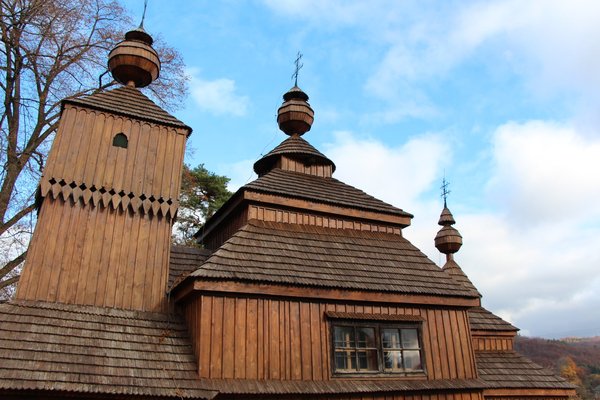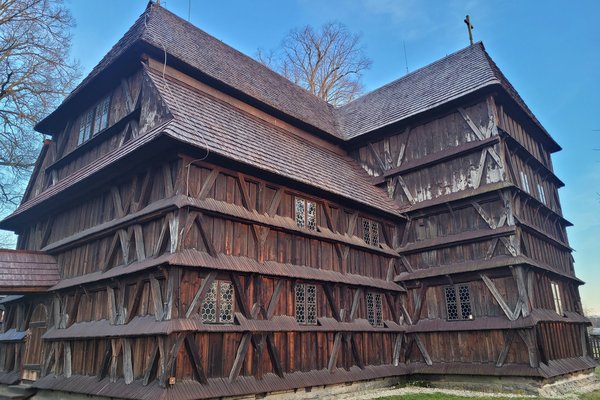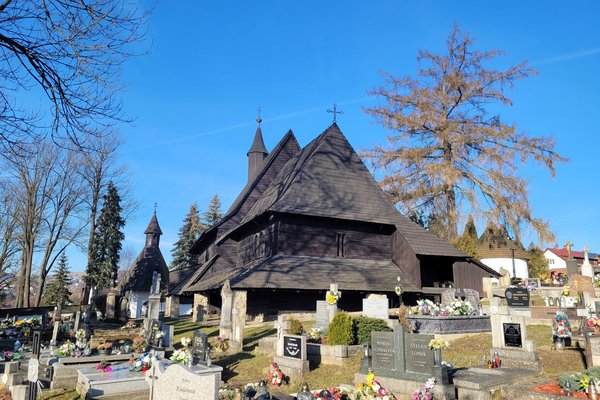Slovakia
Wooden Churches of the Slovak Carpathians
The Wooden Churches of the Slovak part of the Carpathian Mountain Area are examples of local traditional religious architecture.
The eight churches (plus one belfry!) consist of two Roman Catholic, three Protestant and three Greek Catholic ones, showing the inter-cultural character of this historic region where Latin and Byzantine cultures have overlapped. They date from the late Middle Ages to the end of the 18th century and are decorated with naïve wall and ceiling paintings.
Community Perspective: Matejicek has described 6 out of the 8 churches and Hubert got to 7 out of 8; the Protestant ones stand out most, although opinions vary on which one is ‘the best’. Although the churches are known for their interior decorations, it can be difficult to get inside even in summer.
Site Info
Official Information
- Full Name
- The Wooden Churches of the Slovak part of Carpathian Mountain Area (ID: 1273)
- Country
- Slovakia
- Status
-
Inscribed 2008
Site history
History of Wooden Churches of the Slovak Carpathians
- 2008: Inscribed
- Inscribed
- 2002: Revision
- Part of former TWHS "Kezmarok Wooden Articular Church and historical center of the city" (1995-2002) has been merged into this nomination
- Type
- Cultural
- Criteria
- iii
- iv
Links
- UNESCO
- whc.unesco.org
- Official
-
- slovakia.travel — Wooden Churches in Slovakia
All Links
UNESCO.org
- whc.unesco.org — whc.unesco.org/
Official Website
- slovakia.travel — Wooden Churches in Slovakia
Community Information
- Community Category
- Religious structure: Christian
Travel Information
Recent Connections
-
Perfect Inscriptions
2008 -
Depicted in Mizielinska Maps
Ruska Bystra, BodruzalSee i.pinimg.co…
-
Extended from original TWHS
Originally only Kezmarok.
Connections of Wooden Churches of the Slovak Carpathians
- Geography
- Trivia
-
-
Built or owned by Germans
Kezmarok used to be a German settlement -
Depicted in Mizielinska Maps
Ruska Bystra, BodruzalSee i.pinimg.com
-
Minority communities
Two of the churches belong to the Ruthenian / Rusyn community
-
- Architecture
- World Heritage Process
-
-
Perfect Inscriptions
2008 -
Extended from original TWHS
Originally only Kezmarok.
-
- Religion and Belief
-
-
Eastern Catholic Churches
Bodruzal, Ladomirova and Ruska Bystra are Greek Catholic -
Protestantism
Kezmarok church is Lutheran
-
- Timeline
-
-
Built in the 15th century
represent one of the best examples of European wooden religious architecture from the late Middle Ages to the end of 18th century; Hervartov, Saint Francis Church (1460-1480), Tvrdosin built as late as the second half of the 15th century (AB ev)
-
- WHS Hotspots
News
No news.
Recent Visitors
Visitors of Wooden Churches of the Slovak Carpathians
- Adrian
- Adrian Turtschi
- Alexander Barabanov
- Alexander Lehmann
- A. Mehmet Haksever
- Argo
- Artur Anuszewski
- Ask Gudmundsen
- Assif
- Atila Ege
- Axel Hansson
- Bamse
- BaziFettehenne
- Bill Maurmann
- Bin
- Bodil Ankerly
- Bropyk
- Can SARICA
- Carlos Sotelo
- Cezar Grozavu
- Cheryl
- Christoph
- Christravelblog
- Cirene Moraes
- Clyde
- Csaba Nováczky
- cutecid
- czesioszpachelka
- Dagmara
- Daniel Chazad
- Daniel Gabi
- Dan Pettigrew
- David Aaronson
- David Berlanda
- David Marton
- debatecoach
- Dimitar Krastev
- Dolemite92
- Dorejd
- Elaine McArdle
- Elia Vettorato
- Els Slots
- Erik Jelinek
- Errol Neo
- Eva Kisgyorgy
- fabi-ddorf
- Fan Yibo
- Farinelli
- Federico P.
- Femke Roos
- FS
- George Gdanski
- GerhardM
- Hammeel
- Harald T.
- Harry Mitsidis
- Hasco
- henrik_hannfors
- Hubert
- Hurrvinek
- Iain Jackson
- Ivan Rucek
- Jakob F.
- Jakubmarin
- Janina Lehmann
- Jarek Pokrzywnicki
- Jawnbeary
- Jeanne OGrady
- Jezza
- JobStopar
- Joel on the Road
- Jonas Kremer
- Jonas Martinsson
- jonathanfr
- Jon Eshuijs
- JoStof
- KarenBMoore
- Karito Vies
- Kasper
- Kbecq
- Ken DJ
- Kerékgyártó
- Klaus Freisinger
- Kurt Lauer
- Lara Adler
- Leafar98
- Lisu Marian
- Loic Pedras
- Luboang
- Luis Filipe Gaspar
- Lukasz Palczewski
- lynnz317@aol.com
- Maciej Gil
- Maciej Gowin
- Mahuhe
- Malgorzata Kopczynska
- Małgosia Łupicka
- marcel staron
- Mardigny
- Martin
- Martina Rúčková
- Marton Kemeny
- Marty
- Matejicek
- Mateusz
- MatusBeber
- MaxHeAnouBen
- MaYumin
- Michael Novins
- Mikko
- Milan Jirasek
- Miloš Tašković
- MMM
- Mohboh
- nan
- Nihal Ege
- Olli-Pekka Turunen
- Patrik
- Paul Schofield
- PeterH
- Peter Lööv
- Petteri
- Philipp Leu
- Philipp Peterer
- Pincze
- Piotr Wasil
- Purrfect
- Rafał Kałczuga
- Randi Thomsen
- Reisedachs
- Reza
- Rick Ohm
- Roger Ourset
- Roman Bruehwiler
- Roman Raab
- Sandmann15
- serghei.belous
- Sergio Arjona
- Shandos Cleaver
- sime147
- Slavi
- Solivagant
- Stan
- Stanislaw Warwas
- Stijn
- Svein Elias
- Szabolcs Mosonyi
- Szabo Viktoria
- Szucs Tamas
- Tamara Ratz
- Taotao Chen
- Tarquinio_Superbo
- Tcchang0825
- Tetena
- Tevity
- Thomas Buechler
- Thomas van der Walt
- Thorben
- Tim Allen
- tony0001
- Tony H.
- Tsunami
- Vanessa Buechler
- VB73
- Walter
- Wimmy
- Wojciech Fedoruk
- Wo_ko
- wrung24
- YaroMir
- Yevhen Ivanovych
- Yi Han Goh
- ynteligent
- Zhenjun Liu
- Zoë Sheng
- Zsuzsanna Forray
Community Reviews
Show full reviewsClyde
Wooden Churches of the Slovak Carpathians
Wooden Churches of the Slovak Carpathians (Inscribed)
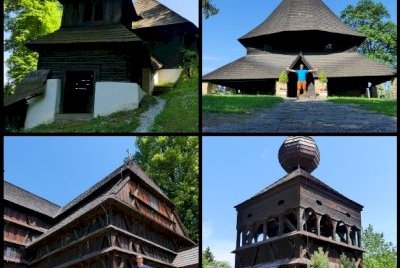
After having visited the wooden church of Hervartov back in 2014, this time round I managed to visit another four Slovak wooden churches, thanks to a very informative UNESCO map at the only restaurant in Vlkolinec. Since they weren't much of a detour between Spis, Vlkolinec and Banska Stiavnica and I had enough time to spare, I set off to visit the wooden churches of Kezmarok, Lestiny, Tvrdosin and Hronsek.
Since Hubert already covered the wooden church of Kezmarok pretty well, my only suggestion is to time your visit with the rather limited opening hours as the highlight of this church is definitely its interior; from the outside, it really is the odd one out of the eight wooden churches and not worth the visit simply for a view from the outside. I also found most of the Slovak churches' interior harder to access than its counterparts in Poland even though I visited during the "peak tourist season" when in theory it should have been easier than visiting in winter. Next, I drove to Lestiny where the wooden church is neatly hidden on a hill full of trees making it hard to take photos. Overall, it is quite similar to the wooden church in Hervartov, almost like a small fortified church enclosed by a wall.
Next, I drove to the Roman Catholic Church of All Saints in Tvrdosin and managed to get inside the church (open July-August from 10am till 4pm; strictly no photos allowed inside). Here a …
Keep reading 0 commentsMatejicek
Wooden Churches of the Slovak Carpathians
Wooden Churches of the Slovak Carpathians (Inscribed)
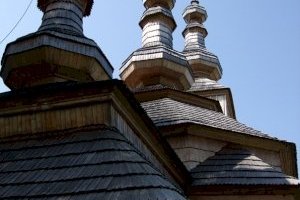
The uniqueness of this ensemble of wooden churches - There are at least 4 other similar WHS! - can be found in the broad variety of styles given by co-existence of 3 faiths, Protestant, Roman-catholic, and Greek-catholic, in small area of Slovak Carpathians, and in the fact that all of them are still in active use of their communities.
(Greek-Catholics religion is unusual combination of Catholics and Orthodox Church that still exists in eastern Slovakia with cathedral located in Prešov. As there is quite large minority of Rurthenians in Prague, they use originally roman-catholic church of S Kliment close to the Charles Bridge in Prague for purposes of their faith).
This is one of on my favorite sites in Slovakia. I liked especially wooden churches of Eastern part of the country built for Greek-Catholics. There are plenty of them, ca. 30-40, in north-east corner of Slovakia close to Polish borders, and I visited many of them, but not all of them yet, during my trips to beech forests of eastern Carpathians. I was lucky in several cases, and had opportunity to visit also their interior. Only 3 Greek-Catholic tserkvas were selected according strict rules of Slovak state party.
I visited 6 churches from 8 in total:
Roman Catholic churches of (1) Tvrdošín and (2) Hervartov that were interesting for me to visit but I found them not such unusual for me as I know similar churches from Czechia and Poland. In general, they adopted and expressed …
Keep reading 0 commentsHubert
Wooden Churches of the Slovak Carpathians
Wooden Churches of the Slovak Carpathians (Inscribed)
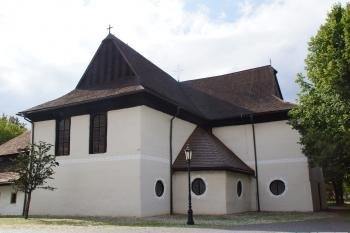
The eight wooden churches of this WHS are spread over a wide area, almost across the whole territory of the Slovak Carpathians. We visited seven of them in August 2014, only Ruská Bystrá was not on our itinerary. The churches differ in their architectural style, partly due to the use of local materials and construction techniques, but mainly because they represent different faiths: Roman Catholic (Hervartov and Trvdosin), Protestant (Kezmarok, Lestiny and Hronsek), and Greek Orthodox (Bodruzal, Ladomirova and Ruska Bystra).
In particular, the Protestant churches have an unusual shape. They date from the 17th century, the time of the religious repression of Protestants. The construction was subject to restrictions (like for the Churches of Peace in Silesia): they had to be built without using metal, without a steeple, outside the city walls, and had to be completed within one year.
In Slovakia, the people seemed little enthusiastic to show us their churches, we had less fortune than in Poland to get access to the interior. At least that was our impression, but other visitors might have different experiences.
Hronsek: a tall half-timbered building with a floor plan in the form of an elongated cross; with a free-standing bell tower; the pews on the ground floor and in the gallery have seats for more than 1000 churchgoers; a lady in the neighbouring rectory opened the church for us; no photos allowed
Leštiny: the church is located on a steep slope above the town; we called the phone number given at …
Keep reading 0 commentsClyde
Wooden Churches of the Slovak Carpathians
Wooden Churches of the Slovak Carpathians (Inscribed)
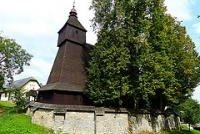
I visited this WHS in September 2014. This WHS is made up of 8 wooden churches in the Slovak Carpathians which bear a very strong resemblance to the Wooden Churches of Southern Malapolska and also some of the Wooden Tserkvas in Poland. The Slovak Wooden Churches seemed to combine some of the architectural elements from both these Polish WHS. Since I had visited quite a number of other non-inscribed Slovak wooden churches earlier and mostly because I had to drive back to Poland, I only had the chance to visit the wooden church of Hervartov. This Roman Catholic church is dedicated to St. Francis of Assisi and is said to be the most beautiful and representative of the 8 inscribed Slovak wooden churches. It also proudly houses the UNESCO WHS certificate. I had saved its coordinates on my GPS but they turned out to be the wrong coordinates. As with most of the wooden churches in Poland and Slovakia, they seem to be well hidden behind a number of trees so the best thing is to be on the lookout of tall trees and when in doubt just ask for help. Perhaps if you were to visit in Autumn or in Winter it would be easier to spot the wooden churches behind the leafless trees! When I arrived at the church's doorstep, a kind man opened the door and welcomed me in. He didn't speak English or German but he smilingly pointed to the UNESCO WHS certificate and the laminated …
Keep reading 0 commentsjohn booth
Wooden Churches of the Slovak Carpathians
Wooden Churches of the Slovak Carpathians (Inscribed)
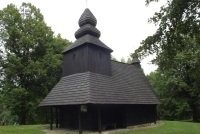
Recently I managed to reach all eight of the listed churches as well as a number of unlisted ones:
Hronsek : was easily accessible being close to its namesake railway station, on the Bratislava to Banska Bystrica line. In accordance with the laws it was set back from the main road, and built entirely of wood without the benefit of nails or bolts. This was quite a feat considering the size of the church building.
Lestiny : a short bus ride from Dolny Kubin station brought me to the village of Lestiny. The church was concealed amongst trees on the slope above the village.
Tvrdosin : the church in this village is located on a hillside between the bus stop and the railway station.
Kezmarok : although there is a lot of timber construction here, the old Evangelical church also comprised lath and plaster walls. The town is accessible by train from Poprad-Tatry.
Ruska Bystra : This was a cute little church set in a clearing in the forest. Reaching this village involved taking buses from Kosice or Michalovice, changing at Sobrance.
Hervartov : With a stunning interior and an intricate design, this was the most attractive of the listed churches. It was easily accessed by bus from Bardejov.
Bodruzal : infrequent buses travel from Svidnik to Bodruzal, passing Ladomirova en route. Easily found the church stood out in this tiny village. Despite ongoing restorations, the colourful interior panels were easily visible.
Ladomirova : I failed to gain access to …
Keep reading 0 commentsAssif
Wooden Churches of the Slovak Carpathians
Wooden Churches of the Slovak Carpathians (Inscribed)
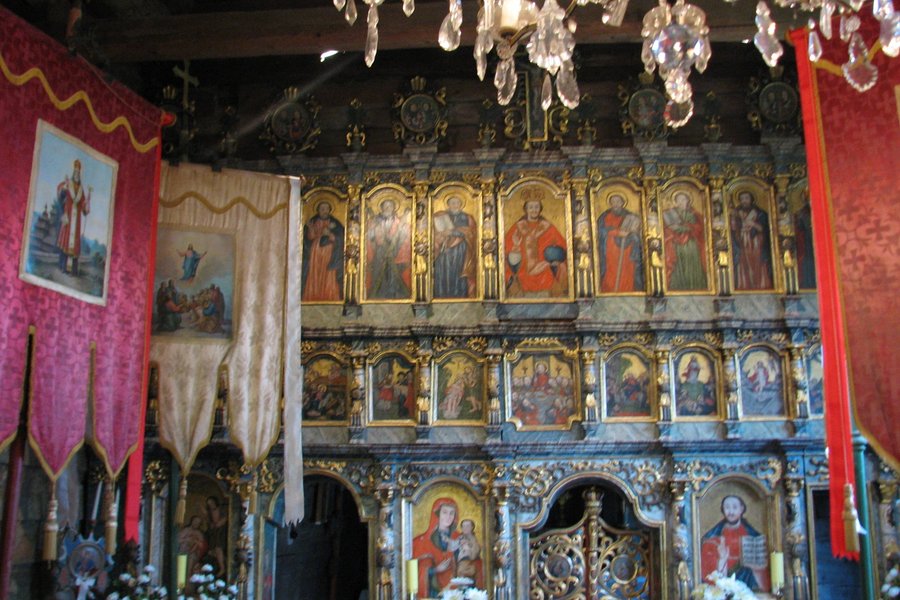
During my trip to the Tatra Mountains I have been to the historic town of Kezmarok (Käsmark) not far away from Levoca, which is another WHS. Kezmarok used to be another Carpathian Saxon town with typical German architecture. The town is very nice and can easily serve as a base for day trips to the Tatra Mountains. The WHS part of town is its wooden Protestant church, originally built outside the city walls.
As the Austro-Hungarian rule was Catholic Protestantism was discouraged. As a result the local Protestant church had to be built outside. It was forbidden to use stone in its construction and its height was limited. The local Germans overcame these difficulties with quite an amazing construction. From the outside the church looks rather plain and this is in fact the only photo available online, but once getting inside the building, the elaborate Baroque decoration strikes you. It's design for itself is not that extraordinary but the fact it's all made of wood, straw and metal.
The church still serves the local German minority. It was also very interesting to talk German with them and listen to their stories about growing up in Communist Czechoslovakia and having to cope with strong anti German emotions. Funny how luck changes...
Keep reading 0 commentsKlaus Freisinger
Wooden Churches of the Slovak Carpathians
Wooden Churches of the Slovak Carpathians (Inscribed)

These 8 churches are spread all across Slovakia, and most don't seem to be easily accessible. I went to the pretty town of Kezmarok, very close to Levoca and Spis Castle. The Articulate Church there is a very impressive building (more so from the inside than the outside) and is well worth visiting. It is one of the Protestant churches making up the site, which also consists of Catolic and Greek Orthodox ones. Maybe I'll go see one of those in the future.
Keep reading 0 commentsEls Slots
Wooden Churches of the Slovak Carpathians
Wooden Churches of the Slovak Carpathians (Inscribed)
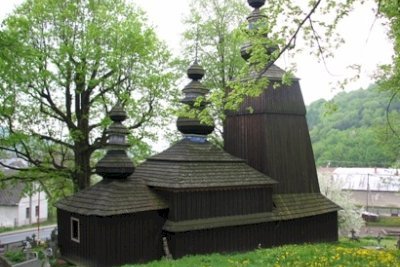
Two months ago I travelled around Slovakia and of course was aware that this site was up for nomination this year. One small problem: which of the 30 or so wooden churches would be chosen to represent them? To be on the safe side I visited 6 of them, all by car in the wider Bardejov region.
A pretty example of these churches can already be found next to the skansen in Bardejov Spa - a rebuilt Greek-catholic church from 1730, originally from Mikulasova and still in use.
Just south of Bardejov lies the church of Hervartov: a Roman Catholic church dating from the 15th century. Its exterior is the dark kind of wood that looks like the Scandinavian stave churches. When I circle around the building, a bus full of schoolchildren arrives. The lady with the key comes running after them, and this gives me a good opportunity to check out the church interior. The lady even starts charging a 30SK entry fee and sells postcards and other souvenirs. But it's really worth it because of the original frescoes, the wooden statues and the rococo altarpiece. Much more elaborate than I would have guessed from the outside.
From Hervartov I drive north again. The first stop is the tiny village of Jedlinka, where the old Greek-catholic (Ruthenian) church now is overshadowed by a blinking silver-colored specimen. A sign on the church door shows a simple map of where to get the key. But I drive on …
Keep reading 0 comments

